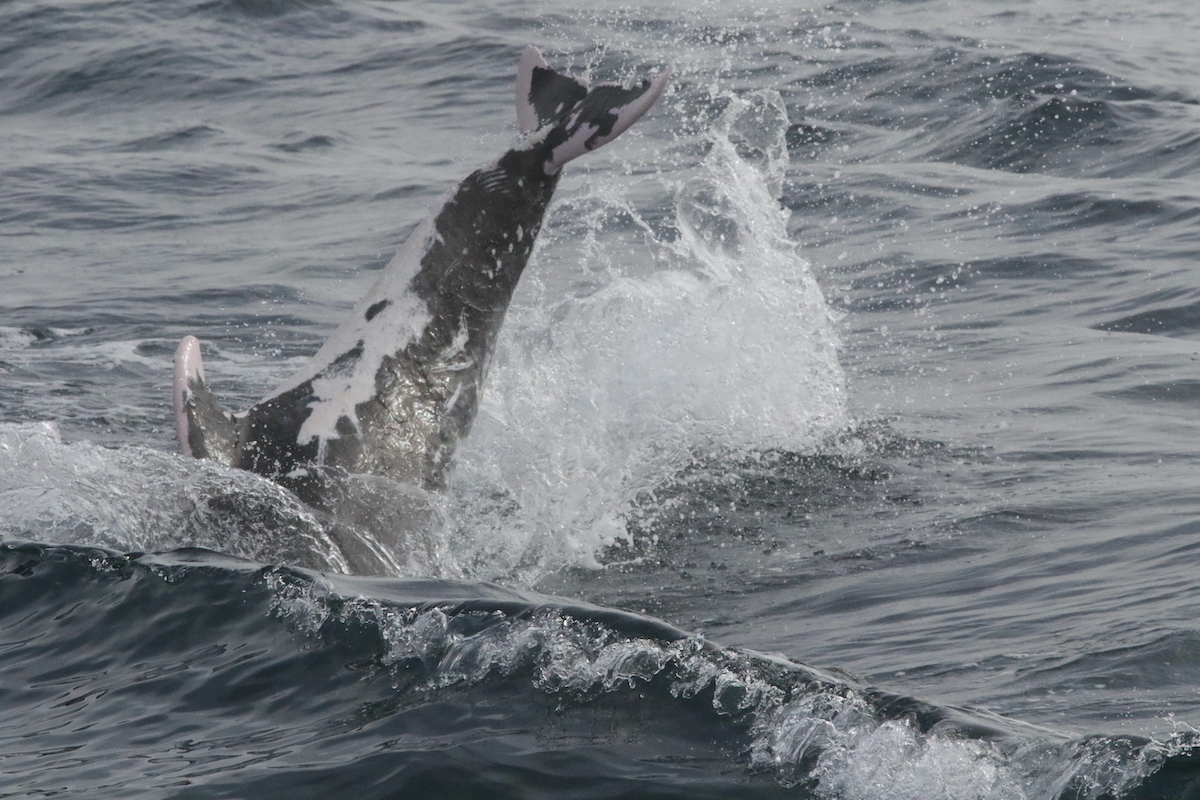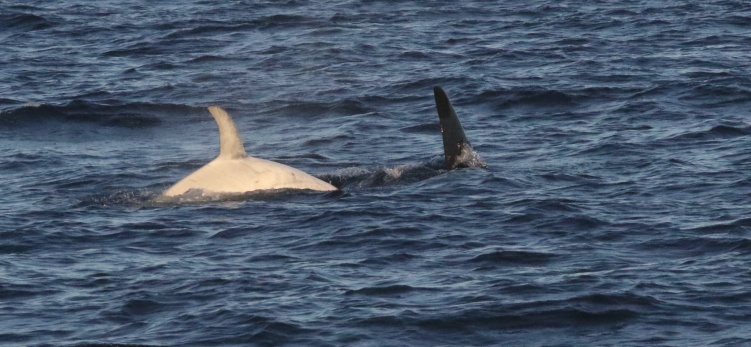White Whale and Dalmatian Dolphin Spotted in Santa Barbara Channel
Orca and Bottlenose Have ‘Leucism’ That Lightens Their Skin

Within the pod, he stood out like no other bottlenose dolphin. Mid-morning sun rays reflected off his splotchy white patches whether he was swimming on the surface of the Santa Barbara Channel or just beneath.
This particular bottlenose is known as Patches, and he was first documented off San Diego by naturalist Mark Tyson in 2006. Patches has leucism. Not to be confused with albinism, which is defined as the total absence of melanin, leucism refers to an abnormality in the deposition of pigment in an animal’s skin, feathers, scales, or hair.
“Leucism is not a specific disorder or trait. It does not ‘work’ in a specific way,” said Alisa Schulman-Janiger, lead research biologist for the nonprofit California Killer Whale Project. “Leucism refers to anything that can cause loss of pigment.”

Patches tends to congregate with 20-40 members of his pod, typically between San Diego and Santa Barbara. His mishmash of blotchy gray and white spots covers his whole body and is mixed with a few scars gathered while sparring with its fellow cetaceans.
Patches is approximately 16 years old and was last seen in the area on November 4, 2021, on the south side of Santa Cruz Island, and then again traveling in the east end of the channel on November 19.
Another example of locally spotted leucism took place on December 12, also on the eastern fringe of the channel. A pod of transient orcas known as the CA216s was found mingling with members from two other orca pods, the CA45s and the CA138s.
Sign up for Indy Today to receive fresh news from Independent.com, in your inbox, every morning.
Initially, the encounter was dominated by the six-foot steeple-shaped dorsal fin of the large male, CA45B. He was mating with CA138B, a rare observation. However, off the bow of the Island Packers ferry were more orca spouts.
As the boat inched forward, an orca like few others appeared. He’s affectionately known as Frosty, or CA216C1, a 3-year-old leucistic orca. Moving swiftly, hugging the left flank of his attentive mother, CA216C, Frosty was born in 2019 and photographed in Monterey Bay that same year.
“There have been very few sightings of leucistic killer whales,” said Schulman-Janiger. “This is a very, very rarely seen pigmentation anomaly.”
Although both Patches and Frosty are cetaceans, they have experienced leucism in different ways. According to Shulman-Janiger, Patches has always had his unique coloring. “He has changed very little over time,” she said. “He was likely born looking very much as he does today.”
Frosty, on the other hand, has morphed in color over his first three years of life. Unlike typical black orcas, he was born with a lighter, ashy tone that has evolved to all-white, except for a faint outline around his eyepatch. And the youngster, Shulman-Janiger noted, looks very robust for his age. “Here’s hoping that he will live long and prosper!” she said.
Support the Santa Barbara Independent through a long-term or a single contribution.




You must be logged in to post a comment.